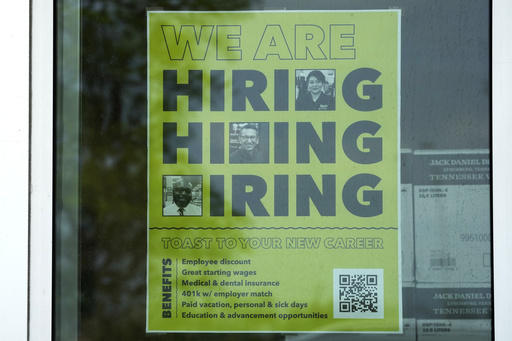A slight increase in Americans filing for unemployment benefits occurred last week, with jobless claims rising by 4,000 to 232,000 for the week ending Aug. 17, as reported by the Labor Department on Thursday. The four-week average of claims, which helps smooth out weekly fluctuations, decreased by 750 to 236,000. The number of Americans collecting jobless benefits for the week ending Aug. 10 was 1.86 million, a rise of 4,000 from the previous week.
Despite the recent uptick in jobless claims, they are still considered low by historical standards. From January to May, weekly claims averaged 213,000. However, there has been a gradual increase in claims since May, reaching 250,000 in late July, possibly impacted by high interest rates affecting the U.S. job market.
There had been concerns about the job market deteriorating rapidly, but the small rise in claims this week comes after two consecutive weeks of declines, alleviating some worries. The Federal Reserve has been combating inflation by raising the benchmark interest rate 11 times in 2022 and 2023 to a 23-year high. Despite this, inflation has decreased steadily from over 9% in June 2022 to 2.9% last month, leading to a stable economy and continued hiring.
The upcoming presidential election in November has the economy as a focal point for voters. While the job market remains solid and inflation is slowing down, consumer prices are still 19% higher than before the inflation surge in 2021, causing frustration among Americans. Some attribute the economic situation to President Joe Biden, with uncertainty on whether Vice President Kamala Harris will bear responsibility as she runs for the presidency.
Recent data shows signs of economic slowdown, with employers adding only 114,000 jobs in July, well below the monthly average from January to June. Furthermore, the revised job report from the Labor Department revealed 818,000 fewer jobs added between April 2023 and March this year, indicating a slowing job market and potentially prompting the Federal Reserve to consider lowering interest rates.
The Labor Department’s estimates illustrate a decline in job growth, averaging 174,000 a month in the year ending in March, down from the initial report of 242,000. Monthly job openings have also declined from a peak of 12.2 million in March 2022 to 8.2 million in June. As the economy shows signs of slowing down and inflation approaches the 2% target, it is anticipated that the Federal Reserve will begin cutting rates at its upcoming meeting in September.
